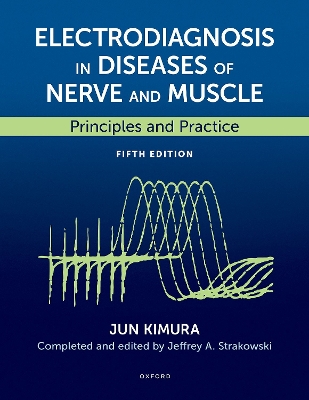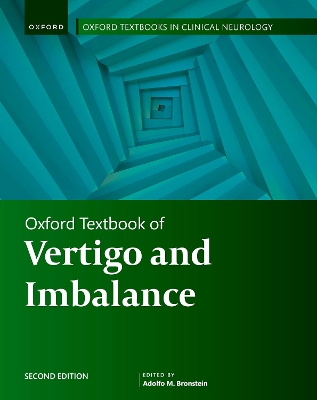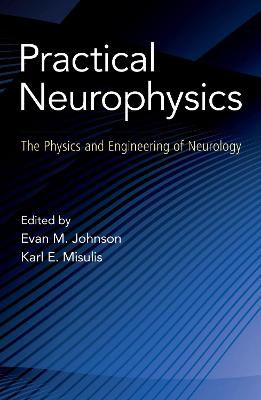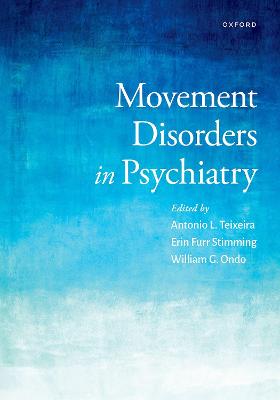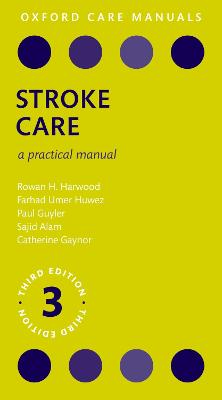Neurologic Examination
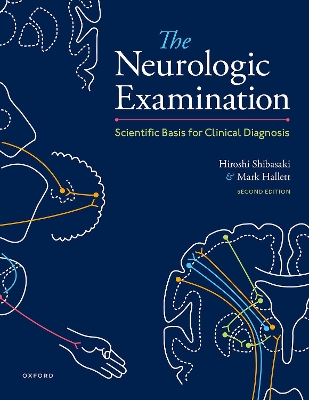 -10%
portes grátis
-10%
portes grátis
Neurologic Examination
Scientific Basis for Clinical Diagnosis
Hallett, Mark; Shibasaki, Hiroshi
Oxford University Press Inc
11/2022
348
Dura
Inglês
9780197556306
15 a 20 dias
Descrição não disponível.
List of Boxes
Preface to the First Edition
Preface to the Second Edition
Explanatory Notes
Acknowledgements
Chapter 1: Diagnosis of Neurological Diseases
Chapter 2: History Taking
Chapter 3: Physical Examination
Chapter 4: Evaluation of Consciousness
Chapter 5: Brainstem and Cranial Nerve Territories
Chapter 6: Olfactory Sensation
Chapter 7: Visual Functions
Chapter 8: Pupils and Accommodation
Chapter 9: Extraocular Muscles, Gaze, and Eye Movements
Chapter 10: Trigeminal Nerve
Chapter 11: Facial Nerve
Chapter 12: Auditory Function
Chapter 13: Sense of Equilibrium
Chapter 14: Swallowing, Phonation, and Articulation
Chapter 15: Neck and Trunk
Chapter 16: Motor Functions and Movement Disorders
Chapter 17: Examination of Motor Functions
Chapter 18: Tendon Reflexes and Pathologic Reflexes
Chapter 19: Involuntary Movements
Chapter 20: Somatosensory Function
Chapter 21: Autonomic Nervous System
Chapter 22: Posture and Gait
Chapter 23: Mental and Cognitive Functions
Chapter 24: Aphasia, Apraxia,a dn Agnosia
Chapter 25: Epilepsy and Convulsion
Chapter 26: Headache and Migraine
Chapter 27: Sleep Disorders
Chapter 28: Episodic Neurological Disorders Related to Ion Channels
Chapter 29: Functional (Psychogenic) Neurological Diseases
Chapter 30: Relay Center of All Sensory and Motor Functions (Thalamus)
Chapter 31: Adjustment to the External Environment and Control of hte Internal Milieu (Hypothalamus and Neuroendocrinology)
Chapter 32: Infectious Diseases of the Nervous System
Chapter 33: Neurological Emergency
Chapter 34: Disability, Functional Recovery, and Prognosis
Chapter 35: How to Plan Laboratory Tests
Afterword: For those who wish to study neurology
Index
Preface to the First Edition
Preface to the Second Edition
Explanatory Notes
Acknowledgements
Chapter 1: Diagnosis of Neurological Diseases
Chapter 2: History Taking
Chapter 3: Physical Examination
Chapter 4: Evaluation of Consciousness
Chapter 5: Brainstem and Cranial Nerve Territories
Chapter 6: Olfactory Sensation
Chapter 7: Visual Functions
Chapter 8: Pupils and Accommodation
Chapter 9: Extraocular Muscles, Gaze, and Eye Movements
Chapter 10: Trigeminal Nerve
Chapter 11: Facial Nerve
Chapter 12: Auditory Function
Chapter 13: Sense of Equilibrium
Chapter 14: Swallowing, Phonation, and Articulation
Chapter 15: Neck and Trunk
Chapter 16: Motor Functions and Movement Disorders
Chapter 17: Examination of Motor Functions
Chapter 18: Tendon Reflexes and Pathologic Reflexes
Chapter 19: Involuntary Movements
Chapter 20: Somatosensory Function
Chapter 21: Autonomic Nervous System
Chapter 22: Posture and Gait
Chapter 23: Mental and Cognitive Functions
Chapter 24: Aphasia, Apraxia,a dn Agnosia
Chapter 25: Epilepsy and Convulsion
Chapter 26: Headache and Migraine
Chapter 27: Sleep Disorders
Chapter 28: Episodic Neurological Disorders Related to Ion Channels
Chapter 29: Functional (Psychogenic) Neurological Diseases
Chapter 30: Relay Center of All Sensory and Motor Functions (Thalamus)
Chapter 31: Adjustment to the External Environment and Control of hte Internal Milieu (Hypothalamus and Neuroendocrinology)
Chapter 32: Infectious Diseases of the Nervous System
Chapter 33: Neurological Emergency
Chapter 34: Disability, Functional Recovery, and Prognosis
Chapter 35: How to Plan Laboratory Tests
Afterword: For those who wish to study neurology
Index
Este título pertence ao(s) assunto(s) indicados(s). Para ver outros títulos clique no assunto desejado.
List of Boxes
Preface to the First Edition
Preface to the Second Edition
Explanatory Notes
Acknowledgements
Chapter 1: Diagnosis of Neurological Diseases
Chapter 2: History Taking
Chapter 3: Physical Examination
Chapter 4: Evaluation of Consciousness
Chapter 5: Brainstem and Cranial Nerve Territories
Chapter 6: Olfactory Sensation
Chapter 7: Visual Functions
Chapter 8: Pupils and Accommodation
Chapter 9: Extraocular Muscles, Gaze, and Eye Movements
Chapter 10: Trigeminal Nerve
Chapter 11: Facial Nerve
Chapter 12: Auditory Function
Chapter 13: Sense of Equilibrium
Chapter 14: Swallowing, Phonation, and Articulation
Chapter 15: Neck and Trunk
Chapter 16: Motor Functions and Movement Disorders
Chapter 17: Examination of Motor Functions
Chapter 18: Tendon Reflexes and Pathologic Reflexes
Chapter 19: Involuntary Movements
Chapter 20: Somatosensory Function
Chapter 21: Autonomic Nervous System
Chapter 22: Posture and Gait
Chapter 23: Mental and Cognitive Functions
Chapter 24: Aphasia, Apraxia,a dn Agnosia
Chapter 25: Epilepsy and Convulsion
Chapter 26: Headache and Migraine
Chapter 27: Sleep Disorders
Chapter 28: Episodic Neurological Disorders Related to Ion Channels
Chapter 29: Functional (Psychogenic) Neurological Diseases
Chapter 30: Relay Center of All Sensory and Motor Functions (Thalamus)
Chapter 31: Adjustment to the External Environment and Control of hte Internal Milieu (Hypothalamus and Neuroendocrinology)
Chapter 32: Infectious Diseases of the Nervous System
Chapter 33: Neurological Emergency
Chapter 34: Disability, Functional Recovery, and Prognosis
Chapter 35: How to Plan Laboratory Tests
Afterword: For those who wish to study neurology
Index
Preface to the First Edition
Preface to the Second Edition
Explanatory Notes
Acknowledgements
Chapter 1: Diagnosis of Neurological Diseases
Chapter 2: History Taking
Chapter 3: Physical Examination
Chapter 4: Evaluation of Consciousness
Chapter 5: Brainstem and Cranial Nerve Territories
Chapter 6: Olfactory Sensation
Chapter 7: Visual Functions
Chapter 8: Pupils and Accommodation
Chapter 9: Extraocular Muscles, Gaze, and Eye Movements
Chapter 10: Trigeminal Nerve
Chapter 11: Facial Nerve
Chapter 12: Auditory Function
Chapter 13: Sense of Equilibrium
Chapter 14: Swallowing, Phonation, and Articulation
Chapter 15: Neck and Trunk
Chapter 16: Motor Functions and Movement Disorders
Chapter 17: Examination of Motor Functions
Chapter 18: Tendon Reflexes and Pathologic Reflexes
Chapter 19: Involuntary Movements
Chapter 20: Somatosensory Function
Chapter 21: Autonomic Nervous System
Chapter 22: Posture and Gait
Chapter 23: Mental and Cognitive Functions
Chapter 24: Aphasia, Apraxia,a dn Agnosia
Chapter 25: Epilepsy and Convulsion
Chapter 26: Headache and Migraine
Chapter 27: Sleep Disorders
Chapter 28: Episodic Neurological Disorders Related to Ion Channels
Chapter 29: Functional (Psychogenic) Neurological Diseases
Chapter 30: Relay Center of All Sensory and Motor Functions (Thalamus)
Chapter 31: Adjustment to the External Environment and Control of hte Internal Milieu (Hypothalamus and Neuroendocrinology)
Chapter 32: Infectious Diseases of the Nervous System
Chapter 33: Neurological Emergency
Chapter 34: Disability, Functional Recovery, and Prognosis
Chapter 35: How to Plan Laboratory Tests
Afterword: For those who wish to study neurology
Index
Este título pertence ao(s) assunto(s) indicados(s). Para ver outros títulos clique no assunto desejado.

